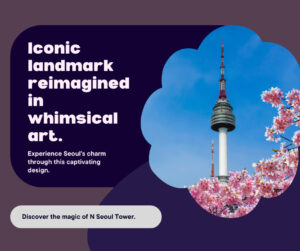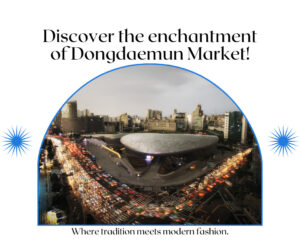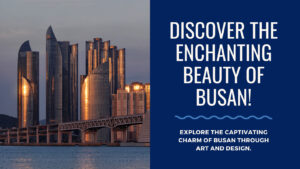
a detailed guide for a tourist visiting South Korea:
- Visa Requirements: Check if you need a visa to enter South Korea based on your nationality. Many countries have visa-free or visa-on-arrival arrangements for short-term visits.
- Best Time to Visit: South Korea experiences four distinct seasons. Spring (April to June) and Autumn (September to November) are ideal for mild weather and beautiful foliage. Summers (June to August) can be hot and humid, while winters (December to February) are cold with occasional snowfall.
- Transportation: South Korea has an efficient public transportation system, including subways, buses, and trains. T-money cards are convenient for payments. Alternatively, taxis are widely available but can be more expensive.The T-Money Card is a prepaid transportation card that can be used to pay for public transportation in cities across Korea, including buses and subways. It provides cash-free travel around Korean cities, and takes the hassle out of to get around Korea and buying tickets for each journey.
- Accommodation: South Korea offers a range of accommodation options, from budget guesthouses to luxury hotels. Popular areas to stay include Seoul, Busan, and Jeju Island.
- Language: While Korean is the official language, many Koreans, especially in tourist areas, speak some English. It’s helpful to learn basic Korean phrases for convenience.
- Currency and Money: The currency is the South Korean Won (KRW). Credit cards are widely accepted, but it’s advisable to carry some cash, especially for smaller establishments and street vendors.
- Must-Visit Destinations:Each of these destinations offers a unique blend of culture, history, nature, and culinary delights, making them must-visit spots for anyone traveling to South Korea.
- Gyeongbokgung Palace: The largest palace in Seoul, known for its beautiful architecture and expansive grounds.
 Bukchon Hanok Village: A traditional Korean village with well-preserved hanok (traditional houses), offering a glimpse into Seoul’s past.
Bukchon Hanok Village: A traditional Korean village with well-preserved hanok (traditional houses), offering a glimpse into Seoul’s past. N Seoul Tower: An iconic landmark offering panoramic views of Seoul, especially breathtaking at night.
N Seoul Tower: An iconic landmark offering panoramic views of Seoul, especially breathtaking at night. Dongdaemun Market: A vibrant shopping district known for its diverse range of goods, including clothing, accessories, and textiles.
Dongdaemun Market: A vibrant shopping district known for its diverse range of goods, including clothing, accessories, and textiles. 
- ii.Busan:
 Jagalchi Fish Market: Korea’s largest seafood market, where you can see a wide variety of fresh seafood and enjoy delicious seafood dishes.
Jagalchi Fish Market: Korea’s largest seafood market, where you can see a wide variety of fresh seafood and enjoy delicious seafood dishes.- Haeundae Beach: One of Korea’s most famous beaches, perfect for relaxing, swimming, and enjoying water sports.
- Gamcheon Culture Village: A colorful hillside village filled with art installations, murals, and quirky shops, often referred to as the “Machu Picchu of Busan.” iii.Jeju Island:
- Seongsan Ilchulbong Peak: Also known as “Sunrise Peak,” a UNESCO World Heritage Site famous for its stunning sunrise views and volcanic crater.
- Cheonjiyeon Waterfall: A picturesque waterfall nestled in a lush forest, offering a tranquil escape from the city.
- Hallasan National Park: Home to Hallasan, South Korea’s highest mountain, offering hiking trails with diverse flora and fauna, including the famous Baekrokdam Crater Lake.iv.Gyeongju:
- Bulguksa Temple: A UNESCO World Heritage Site known for its beautiful architecture and serene surroundings.
- Seokguram Grotto: A magnificent Buddhist cave temple housing a stunning granite Buddha statue.
- Yangdong Village: A UNESCO World Heritage Site featuring well-preserved traditional Korean houses and offering insights into the lifestyle of the Joseon Dynasty.
- Gamcheon Culture Village: A colorful hillside village filled with art installations, murals, and quirky shops, often referred to as the “Machu Picchu of Busan.” iii.Jeju Island:
- Cultural Etiquette:
- Bowing is a common form of greeting.
- Remove shoes before entering someone’s home or certain establishments like temples.
- Refrain from displaying excessive affection in public.
- Learn how to use chopsticks if you’re dining at traditional Korean restaurants.
- Food: Korean cuisine is diverse and flavorful. Don’t miss out on iconic dishes like bibimbap, bulgogi, kimchi, and Korean barbecue. Street food markets are also popular for sampling a variety of snacks.
- Safety: South Korea is generally a safe country for tourists. However, exercise normal precautions against pickpocketing and scams, especially in crowded tourist areas.
- Cultural Events and Festivals: Check the calendar for cultural events and festivals happening during your visit, such as the cherry blossom festivals in spring or the lantern festivals during Buddha’s birthday in May.
- Shopping: South Korea is known for its shopping districts and markets. Explore shopping streets like Myeongdong in Seoul for cosmetics and fashion, or Insadong for traditional crafts and souvenirs.
Remember to pack appropriately for the weather and plan your itinerary in advance to make the most of your trip to South Korea!